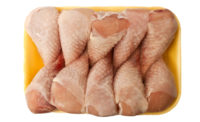It’s not surprising that shoppers – across all demographics – are flocking to value brands as a way to save money during the recession. However, it might be surprising to learn that consumers also are increasing their premium brand purchases.
That assessment comes fromInformation Resources Inc.’slatest IRI Times & Trends Report, “The Value/Premium Dichotomy.” The Chicago-based retail market analyst says value brands are growing rapidly in terms of dollars, while mid-tier brands lag. Premium brands also are also picking up steam. On a unit sales basis, IRI says value brands enjoyed more growth in 2009 than 2008, while premium brand sales shrank just over 1 percent and mid-tier brands shrank nearly 3 percent.
“Several shopper trends have converged to create this dichotomy,” says Thom Blischok, president of IRI Consulting and Innovation. “The most obvious trend is the move to trade down. Shoppers have moved away from their traditional brands to value brands, including both retailers’ private brands as well as economy brands from national brand manufacturers.”
But, shoppers are also focused on premium brands, through what IRI has dubbed “sophisticated splurging.” Shoppers are holding onto the premium brands they crave but are purchasing them at value stores. Premium brand purchases have grown the most at dollar stores, supercenters and Wal-Mart, while shrinking at grocery, drug, mass merchandise and club stores.In addition, retailers have dramatically increased the sophistication of their private brand strategies. Many now offer high-end private brands that offer a premium experience at a lower cost versus premium national brands.
IRI says consumers’ concerns about health and wellness also are driving the spike in premium brand sales. For example, while bottled water unit sales decreased 3 percent during the last year, premium bottled water unit sales jumped 11 percent, driven by innovations, such as Glaceau vitamin water. Similarly, yogurt sales were essentially flat during the last year, while premium yogurt sales grew 34 percent.
Elevate your expertise in refrigerated and frozen foods with unparalleled insights and connections.
Get the latest industry updates tailored your way.
JOIN TODAY!Copyright ©2024. All Rights Reserved BNP Media.
Design, CMS, Hosting & Web Development :: ePublishing



